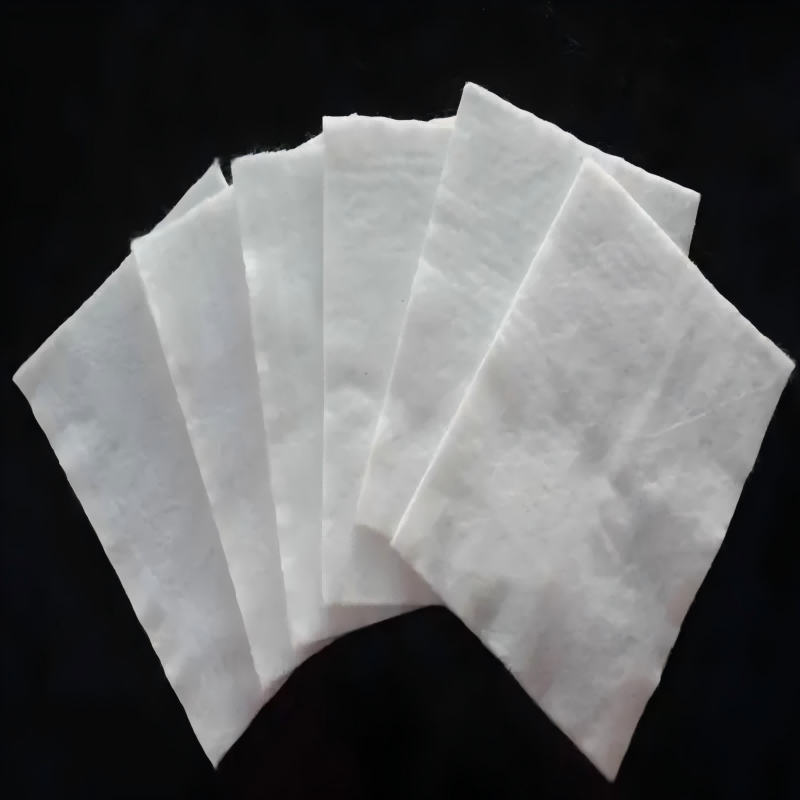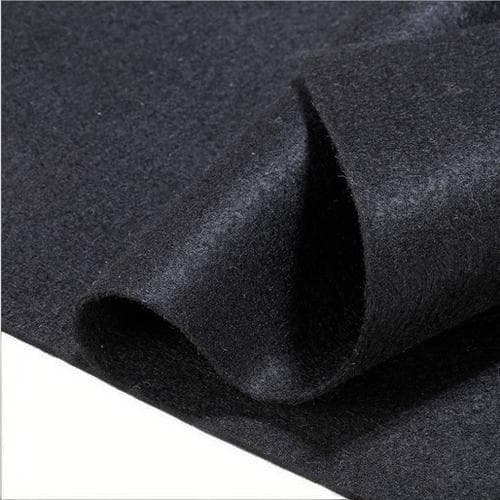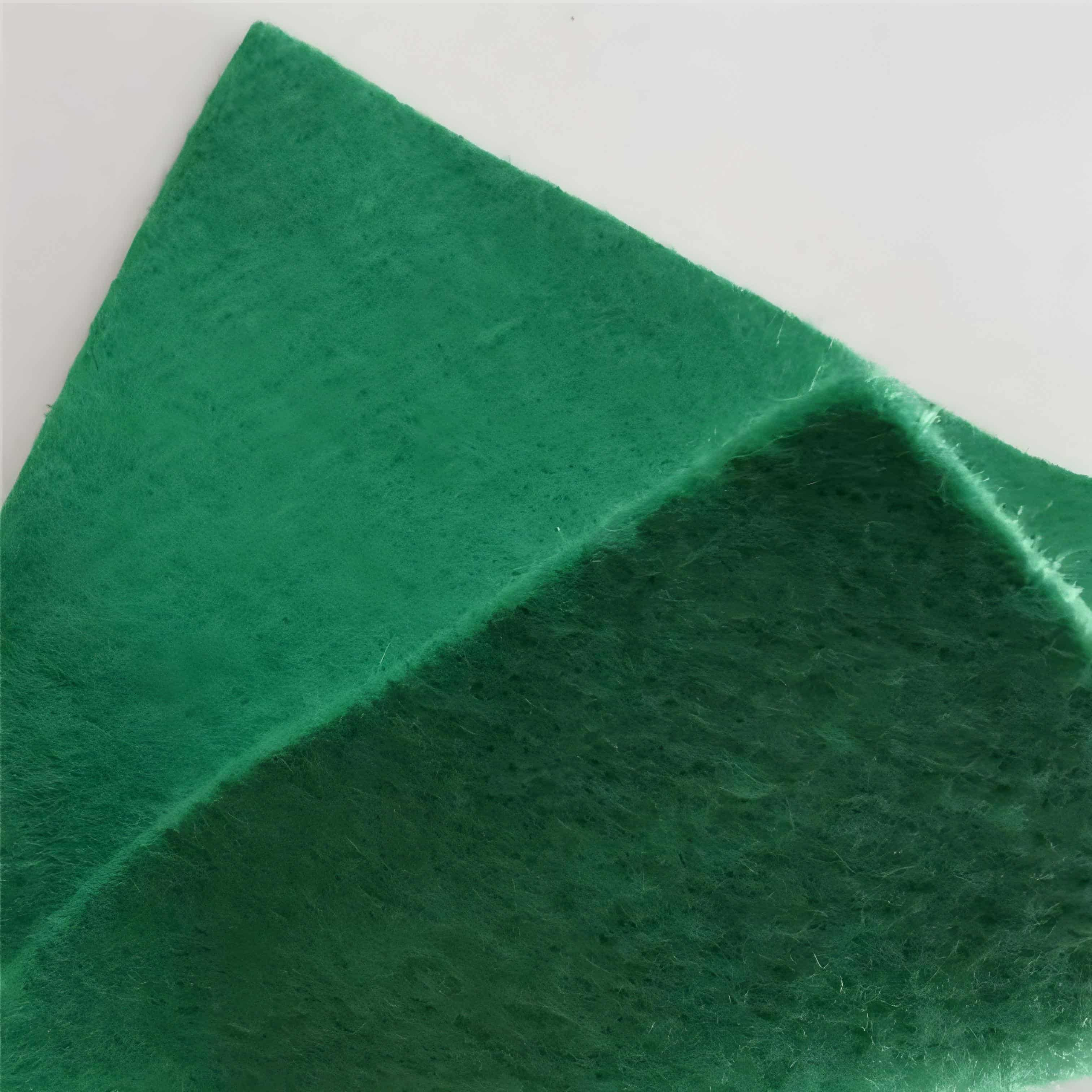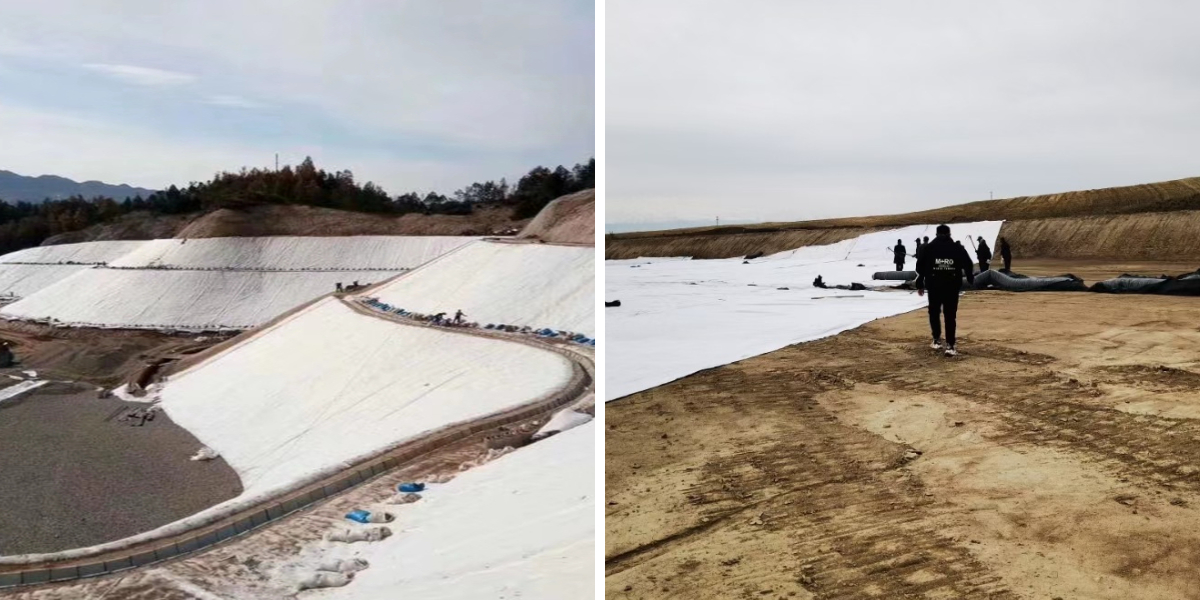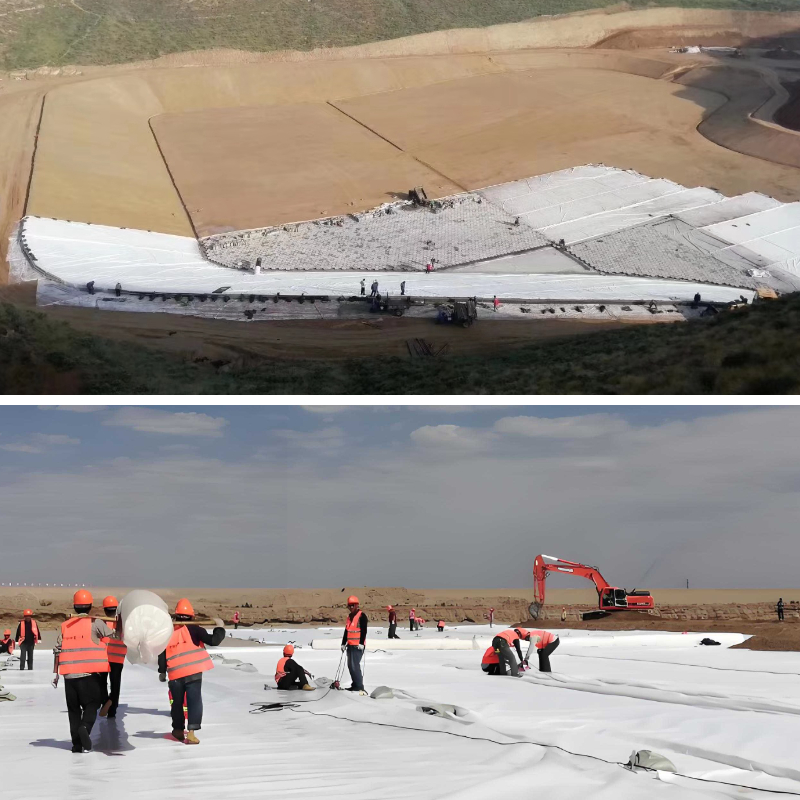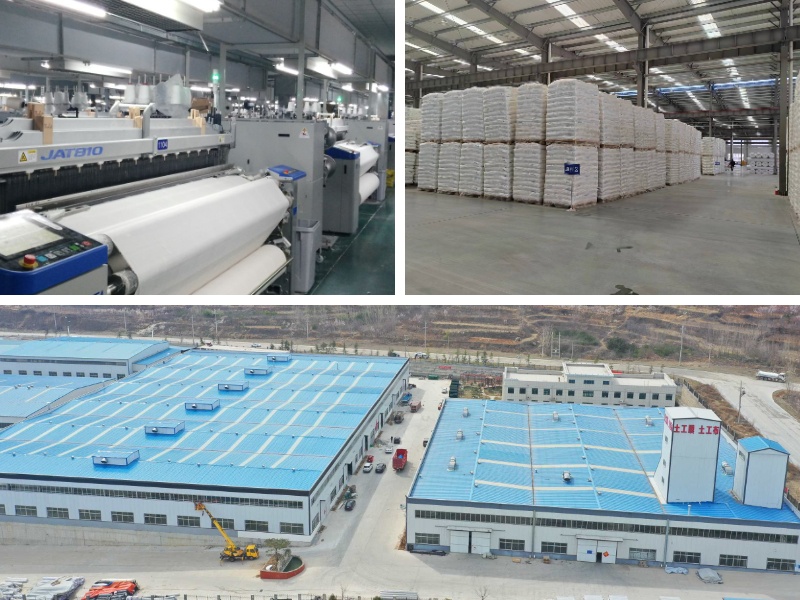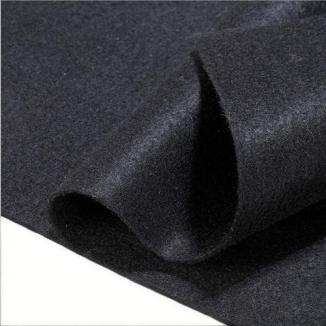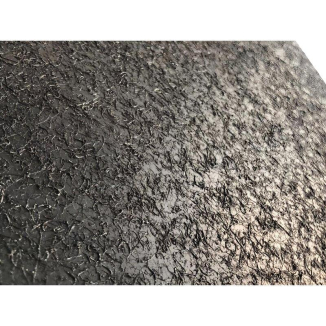Geotextile Drainage Fabric
1.Efficient filtration, stable engineering:Accurate pore size, blocking soil particles, allowing water to flow, preventing erosion, and ensuring the stability of roadbed embankments.
2.Excellent drainage and long-lasting durability:Permeable structures can quickly drain excess water, reduce water erosion, extend the service life of the project, and are suitable for roadbeds and retaining walls.
3.Reinforced awesome, large bearing capacity:High strength, deformation resistance, laying in soil to transfer loads, enhancing soil, and making the foundation slope more load-bearing.
4.Reliable isolation, no mixing of materials:Separate different sand and gravel soils, prevent material infiltration, and ensure that each layer of material works well.
5.Adequate protection and minimal damage:It can cushion impacts, block erosion and wear, and also protect vegetation growth.
Product Introduction
Basic attributes
Geotextile Drainage Fabric is a permeable cloth like material made mainly from synthetic fibers such as polypropylene and polyester through processes such as needle punching and weaving, often in the form of rolls or sheets.
It has both certain permeability and mechanical properties (tensile strength, tear strength, etc.), and can adapt to the basic needs of different projects.
Core functions
Filtration: intercepting soil particles, allowing water infiltration, and preventing foundation instability.
Drainage: Drain excess water from the soil and reduce pore water pressure.
Isolation: Separate materials of different properties (such as roadbeds and foundations) to avoid mixing.
Reinforcement: Enhance soil strength, limit deformation, and improve structural stability.
Protection: Protect the soil from erosion, erosion, or mechanical damage.
Main features
Strong durability: corrosion-resistant, anti-aging, and can be used for a long time in complex environments.
Convenient construction: lightweight and easy to transport, simple to lay and assemble, can shorten the construction period.
Good economy: The cost is lower than traditional materials, saving labor and maintenance costs.
Wide adaptability: customizable specifications, suitable for multiple fields such as water conservancy, highways, and environmental protection.
Product Parameters
project | metric | ||||||||||
Nominal strength/(kN/m) | |||||||||||
6 | 9 | 12 | 18 | 24 | 30 | 36 | 48 | 54 | |||
1 | Longitudinal and transverse tensile strength / (kN/m) ≥ | 6 | 9 | 12 | 18 | 24 | 30 | 36 | 48 | 54 | |
2 | Maximum elongation at maximum load in longitudinal and transverse directions/% | 30~80 | |||||||||
3 | CBR top penetration strength /kN ≥ | 0.9 | 1.6 | 1.9 | 2.9 | 3.9 | 5.3 | 6.4 | 7.9 | 8.5 | |
4 | Longitudinal and transverse tearing strength /kN | 0.15 | 0.22 | 0.29 | 0.43 | 0.57 | 0.71 | 0.83 | 1.1 | 1.25 | |
5 | Equivalent aperture O.90(O95)/mm | 0.05~0.30 | |||||||||
6 | Vertical permeability coefficient/(cm/s) | K× (10-¹~10-), where K=1.0~9.9 | |||||||||
7 | Width deviation rate /% ≥ | -0.5 | |||||||||
8 | Unit area mass deviation rate /% ≥ | -5 | |||||||||
9 | Thickness deviation rate /% ≥ | -10 | |||||||||
10 | Thickness coefficient of variation (CV)/% ≤ | 10 | |||||||||
11 | Dynamic perforation | Puncture hole diameter/mm ≤ | 37 | 33 | 27 | 20 | 17 | 14 | 11 | 9 | 7 |
12 | Longitudinal and transverse fracture strength (grab method)/kN ≥ | 0.3 | 0.5 | 0.7 | 1.1 | 1.4 | 1.9 | 2.4 | 3 | 3.5 | |
13 | Ultraviolet resistance (Xenon arc lamp method) | Longitudinal and transverse strength retention rate% ≥ | 70 | ||||||||
14 | Ultraviolet resistance (fluorescence UV lamp method) | Longitudinal and transverse strength retention rate% ≥ | 80 | ||||||||
Product Application
Water conservancy engineering
Geotextiles play a crucial role in hydraulic engineering. In dam construction, it can serve as an anti filter layer to prevent soil particles from flowing away with water, while ensuring water infiltration and maintaining the stability of the dam structure; During river regulation, it can be laid on the surface of the embankment to resist water erosion and protect the embankment from erosion; In addition, it is commonly used for filtration and drainage in reservoirs, channels, and other engineering projects to enhance the durability of water conservancy facilities.
Transportation Engineering
Transportation engineering is an important application scenario for geotextiles. In the construction of roadbeds for highways and railways, geotextiles can isolate roadbeds from foundations, prevent mixing of different soil layers, and enhance the bearing capacity of roadbeds through reinforcement to reduce settlement; Laying between the base and surface layers of the road can provide protection and extend the service life of the road surface; Using geotextile in the filling area at both ends of the bridge can alleviate uneven settlement and reduce the occurrence of vehicle jumping at the bridgehead.
Environmental Protection Engineering
The application of geotextiles in environmental engineering is also very extensive. In landfills, it can serve as an isolation and filtration layer to prevent soil and groundwater pollution caused by leachate, while promoting the collection and treatment of leachate; In the construction of artificial wetlands, geotextiles can help fix wetland substrates, filter impurities in water, and assist in the stable operation of wetland ecosystems; In addition, geotextiles can also be used for auxiliary work related to water purification in facilities such as sedimentation tanks and filtration tanks in sewage treatment plants.
Municipal Engineering
The field of municipal engineering also cannot do without geotextiles. In urban road renovation and expansion projects, it can be used for roadbed reinforcement to improve the overall strength of the road; In underground drainage systems, such as around drainage ditches and rainwater pipes, geotextiles can play a filtering and drainage role to prevent pipe blockage; In the pavement base treatment of parks, squares and other venues, the use of geotextiles can isolate different materials and ensure the stability of the pavement structure.
In summary, geotextiles have indispensable applications in many engineering fields such as water conservancy, transportation, environmental protection, and municipal engineering due to their functions of filtration, drainage, isolation, reinforcement, and protection. It can not only improve the quality and stability of engineering, but also reduce construction costs and shorten the construction period, providing important guarantees for the smooth implementation and long-term stable operation of various projects.


